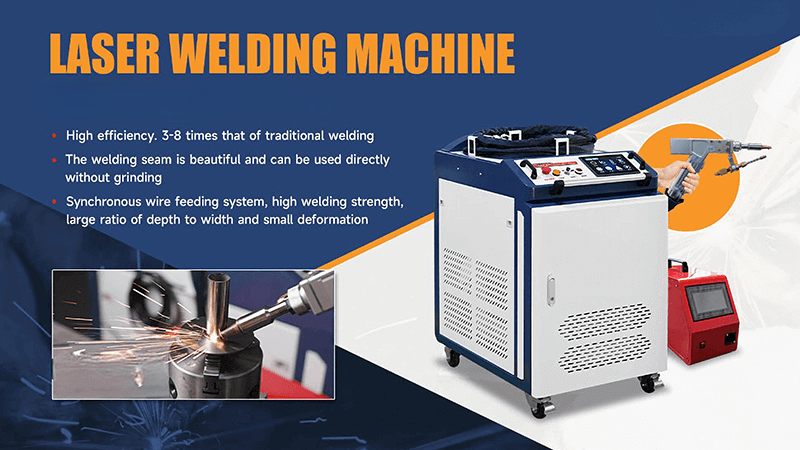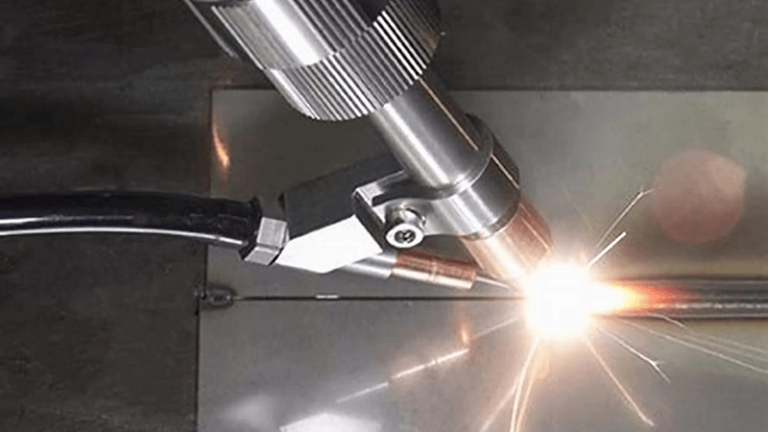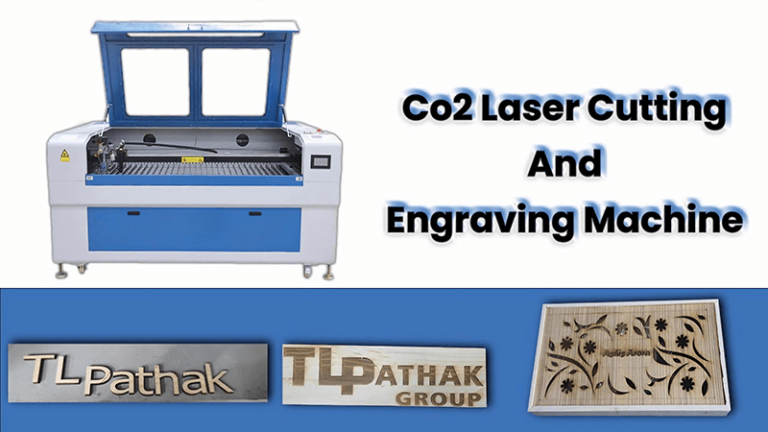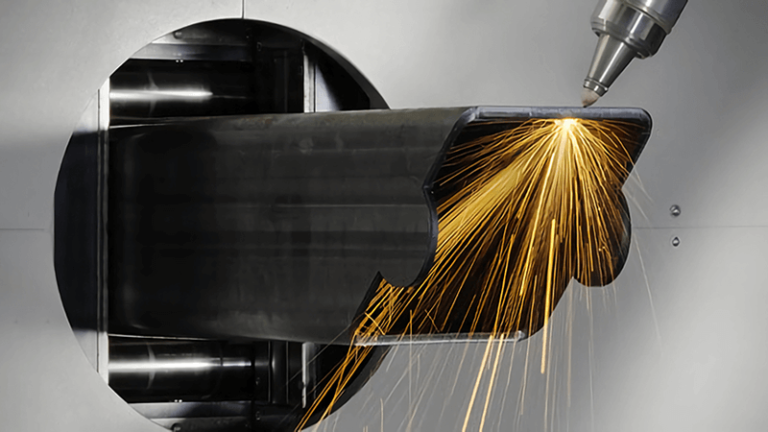
Are you tired of traditional welding methods that take up too much time, create excess heat, and cause distortion in your materials? As a Sales Engineer at Kirin Laser, I can tell you that the solution to these common pain points lies in laser welding systems. But how does laser welding work, and is it the right choice for your business? In this comprehensive guide, I’ll walk you through everything you need to know, from the basics to the latest trends.
Laser welding is revolutionizing industries by offering faster, more precise, and cleaner welds. Unlike traditional welding, which relies on heat from an open flame or an electric arc, laser welding uses focused light to melt and bond materials. The result is minimal distortion, faster processing times, and better precision. If you’re considering upgrading your operations or diving into the world of laser technology, keep reading – I’ll help you understand why it’s worth the investment!
Laser welding isn’t just for high-tech industries. It’s quickly becoming the go-to solution for a wide range of applications. Whether you’re in automotive, aerospace, or even the medical device sector, this technology could be a game-changer. Ready to learn how?
What is Laser Welding?
At its core, laser welding is a process that uses a high-powered laser beam to melt the materials being welded, creating a strong bond once the metal cools and solidifies. The laser is typically focused on the material through a fiber optic cable or a series of mirrors, which directs the beam precisely where it’s needed. Laser welding can be used for a variety of materials, including metals, plastics, and ceramics with different types of lasers.
But why should you consider laser welding over traditional methods? Traditional welding techniques, like MIG or TIG welding, often involve more heat, which can lead to more distortion, slower processing times, and additional finishing work. Laser welding, however, uses less heat and is much faster, leading to higher productivity and a cleaner finished product.
Laser welding systems are more time-efficient than traditional welding methods.True
Laser welding uses focused energy to weld materials quickly, reducing overall processing time compared to traditional methods.
Laser welding causes significant distortion in the materials being welded.False
Laser welding produces less heat and thus minimizes distortion compared to conventional welding techniques.
How Does Laser Welding Work?
Laser welding works by focusing a laser beam onto the material to be welded. This concentrated energy is absorbed by the material, raising its temperature and causing it to melt. The molten material then forms a weld pool, which cools to create a strong bond. The beauty of this process is that the laser’s energy is very focused, meaning it can precisely melt the material without affecting the surrounding area.
There are several types of lasers used in welding, including CO2 lasers, Nd:YAG lasers, and fiber lasers. Each of these has its own benefits depending on the materials being worked with. CO2 lasers are excellent for thicker materials, while fiber lasers are ideal for high-precision, low-distortion jobs.
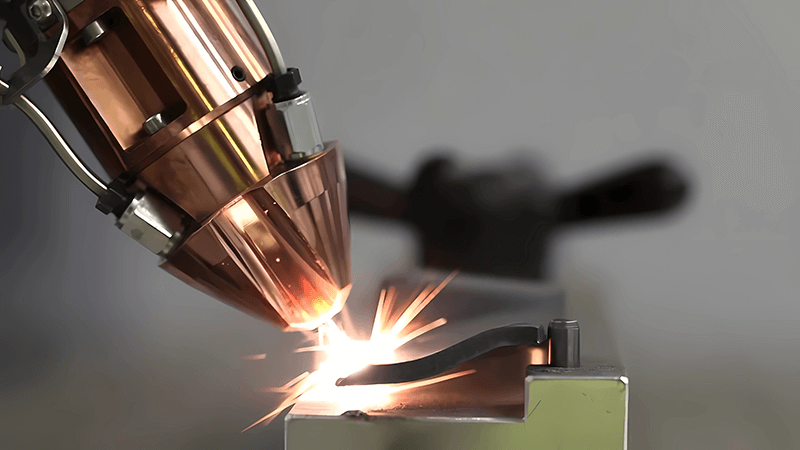
Why Is Handheld Laser Welding Gaining Popularity in Various Industries?
Handheld laser welding is a form of laser welding technology that uses a handheld welding gun to guide the laser beam to the required welding area. This approach offers several advantages, particularly in terms of flexibility and ease of use. Below is a more detailed explanation of handheld laser welding, including both its benefits and challenges:
-
Advantages:
-
High Flexibility: Handheld laser welding allows the operator to easily adjust the position and angle of the welding torch, making it ideal for welding large, complex, or irregularly shaped workpieces. It can be used for a wide range of applications, such as welding large machinery frames, metal artworks with intricate curves, and other difficult-to-reach areas.
-
No Need for Complex Fixtures: Unlike traditional welding methods that often require complicated fixtures to hold the workpiece in place, handheld laser welding does not require such fixtures. This significantly simplifies the process, reduces setup time, and increases overall productivity.
-
Portability: The lightweight and portable nature of handheld laser welding machines makes them ideal for on-site applications, such as maintenance, repair, or installation, where mobility is important.
-
Ease of Use: Contrary to traditional welding techniques, handheld laser welding does not require highly specialized skills or extensive experience. Many users, even those without prior welding experience, can quickly learn to operate handheld laser welding machines with basic training. This makes it an accessible solution for industries that require quick turnaround times and operators with varying levels of expertise.
-
Minimal Heat-Affected Zone: Handheld laser welding generates less heat compared to conventional welding methods, reducing the risk of thermal deformation and material distortion. This is particularly advantageous when working with thin materials or delicate parts.
-
High Precision and Clean Welds: The concentrated nature of the laser beam allows for precise and clean welds with minimal spatter or defects. The process is highly controlled, leading to better quality and consistency in the final welds.
-
Reduced Need for Post-Welding Processing: The quality of the welds is usually so high that there is less need for post-welding grinding or polishing, saving time and reducing labor costs.
-
-
Challenges:
- Power Limitations: While handheld laser welding is versatile, its power is typically lower than that of fixed laser welding systems. This can limit its use for very thick materials or high-strength applications. However, with advancements in technology, the power of handheld lasers is continually improving.
- Operator Skill: While the welding process itself is relatively easy to learn, there is still a learning curve to ensure consistent and high-quality results. Factors such as hand stability and laser beam focus can impact the weld quality. Although the technology is designed to be user-friendly, operators should still receive adequate training to ensure optimal results.
- Cost of Equipment: Handheld laser welding machines can be more expensive compared to traditional welding equipment, especially for smaller businesses. However, this cost can often be justified by the improved quality, speed, and versatility of the process.
- Welding Material Compatibility: While handheld laser welding can work with a variety of materials, it is most effective on metals that are highly reflective, such as stainless steel and aluminum. For materials with lower reflectivity or different properties, adjustments to the equipment or settings may be needed.
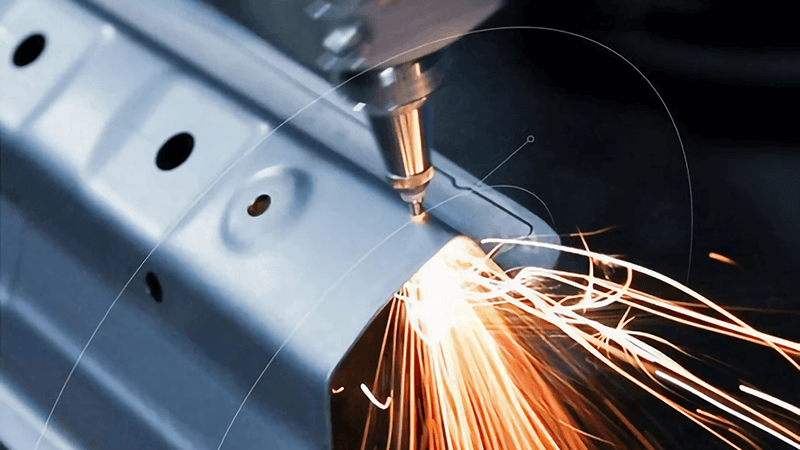
Benefits of Laser Welding
Why should you consider making the switch to laser welding? There are several compelling reasons, from faster processing times to improved weld quality. Here are just a few of the key benefits:
- Precision and Accuracy: Laser welding allows for highly accurate, repeatable results. This is particularly important in industries like aerospace and medical device manufacturing, where precision is critical.
- Speed and Efficiency: Laser welding systems can operate much faster than traditional methods. This translates into lower production times and increased throughput.
- Low Heat Input: One of the key advantages of laser welding is that it requires much less heat compared to conventional methods. This minimizes distortion and reduces the need for post-weld processing.
Can laser welding save you time and money? Absolutely! While the initial investment in a laser welding system might be higher than traditional welding equipment, the long-term savings in time, material waste, and labor make it a cost-effective solution for many industries.
Laser welding systems generate excessive heat, which can damage materials.False
Laser welding systems are designed to minimize heat generation, ensuring that the material is not harmed during the process.
Laser welding systems are highly effective for materials that require minimal heat input.True
Laser welding is ideal for materials sensitive to heat, as it uses concentrated energy to deliver precise welding with minimal thermal impact.
How Can Handheld Laser Welding Machines Revolutionize Various Industries?
Handheld laser welding machines have found a wide range of applications across multiple industries due to their precision, flexibility, and efficiency. Below, we explore how this innovative technology is transforming sectors from hardware manufacturing to automotive repair.
-
Hardware Industry
In the hardware sector, handheld laser welders are used to join a variety of metal products, such as door and window frames. These items often have numerous connection points that require high-precision welding. Handheld laser welding provides a clean, seamless finish, making it ideal for products where appearance matters. The technology also excels in welding small, intricate hardware tools like wrenches, pliers, and other hand tools, ensuring tight, accurate welds that meet the highest standards. -
Automotive Manufacturing and Repair
In the automotive industry, handheld laser welders are indispensable for both manufacturing and repair applications. For example, during the assembly of vehicle parts such as dashboard brackets, laser welding enables the precise joining of components without compromising structural integrity. Additionally, in automotive repairs, handheld laser welders are ideal for on-site fixes, allowing technicians to repair damaged car parts efficiently and with minimal heat distortion, which is crucial for maintaining the safety and performance of the vehicle. -
Home Appliances Manufacturing
Handheld laser welding is also widely used in the production of kitchen appliances. For instance, laser welding machines can be employed to assemble stainless steel components like stove parts, microwave housings, and other kitchen equipment. This technology ensures clean, precise welds that enhance the overall strength and aesthetic of the final product, making it an ideal choice for industries where both functionality and appearance are crucial. -
Jewelry Industry
In jewelry manufacturing, handheld laser welding allows for delicate, precise welds on precious metals such as gold, silver, and platinum. The ability to control the heat and intensity of the laser makes it possible to repair or join intricate pieces without damaging the fine materials, ensuring both the quality and beauty of the final product. -
Electronics and Telecommunications
Handheld laser welding is increasingly utilized in the electronics and telecommunications sectors. It is particularly effective for welding small components, such as connectors, housings, and circuit boards. The precision and non-contact nature of laser welding ensure minimal thermal distortion and maximum product integrity, making it essential for manufacturing high-quality electronic devices. -
Aerospace Industry
In aerospace manufacturing, where precision and reliability are critical, handheld laser welding technology is used to weld complex parts made from lightweight, high-strength alloys. It provides exceptional control over weld depth, minimizing the risk of defects in highly sensitive applications like aircraft components and satellite parts. -
Shipbuilding
The shipbuilding industry benefits from handheld laser welders for the assembly of steel and aluminum parts used in the construction of ships and offshore platforms. The high precision of handheld laser welding ensures the integrity of joints while reducing the need for post-weld cleaning and finishing processes, which can save time and labor costs. -
General Metalworking and Maintenance
Beyond specialized industries, handheld laser welding is increasingly used in general metalworking and maintenance. The flexibility of the tool makes it suitable for on-site repairs in industries such as construction, energy, and manufacturing, where quick, reliable fixes are often required. It allows workers to perform high-quality repairs directly at the point of need, reducing downtime and improving operational efficiency.
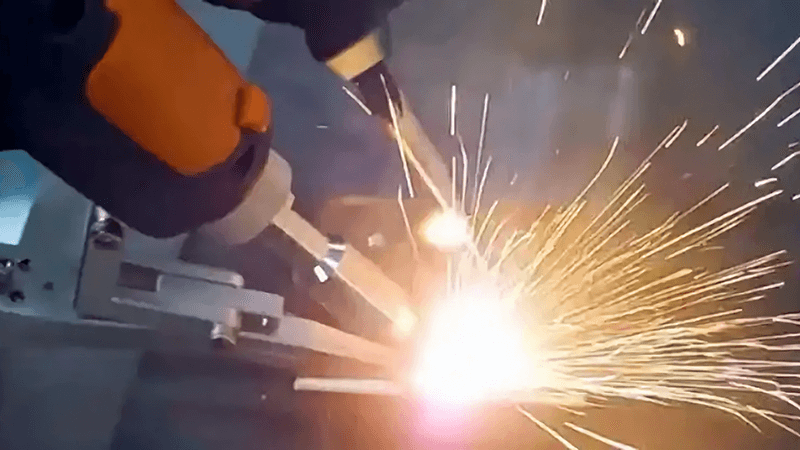
What are Benefits of Handheld Laser Welding?
-
Welding Quality
-
Aesthetic Welds: Handheld laser welding uses a highly concentrated laser beam, which results in narrow, smooth, and clean weld seams. Unlike traditional welding methods, there’s no need for extensive post-welding processes like grinding or polishing, as the laser provides a near-perfect finish right from the start.
-
High Welding Strength: Laser welding creates excellent metallurgical bonds between materials, ensuring that the weld's strength is comparable to, or even greater than, the base material. This enhances the reliability and stability of the welded structure, increasing the overall product quality and service life.
-
Minimal Heat Affected Zone (HAZ): With a much smaller heat input, handheld laser welding minimizes the risk of thermal distortion or residual stresses in the workpiece. This makes it ideal for delicate or precision components that would otherwise be damaged by excessive heat during traditional welding.
-
-
Efficiency and Speed
-
Faster Welding Process: The precision and high energy density of laser welding allow for faster welding speeds compared to traditional techniques. This can significantly reduce production time and increase output, leading to higher overall efficiency.
-
Reduced Waste: The precise control over heat input and minimal material distortion results in less material waste and a cleaner workspace, which also reduces the need for post-welding cleaning.
-
-
Versatility and Flexibility
- Adaptable to Complex Geometries: Handheld laser welders can easily weld in hard-to-reach places, such as narrow gaps, corners, or small spaces. This flexibility makes them ideal for repairing or welding intricate parts, which may be challenging for conventional welding equipment.
- No Need for Gas or Flux: Unlike traditional welding methods that require shielding gases or flux, handheld laser welding typically works in air or with minimal assistance, simplifying the process and reducing operational costs.
-
Safety and Environmentally Friendly
- Improved Safety: Handheld laser welders typically generate less heat and produce fewer fumes compared to traditional welding methods, which can result in a safer working environment.
- Environmentally Friendly: Because they require less energy and produce less waste, laser welding machines are more environmentally friendly than conventional methods.
Factors to Consider When Choosing a Laser Welding System
When investing in a laser welding system, several factors must be considered to ensure you’re making the right choice for your business. These include:
-
Material Compatibility: Different laser systems are suited for different materials. Be sure to select a system that is compatible with the materials you work with most often.
-
Laser Power and Type: Depending on the thickness of the material you’re welding, you may need a more powerful laser. Higher-powered lasers are ideal for thicker materials, while lower-powered lasers are better for finer work.
-
Cost-Effectiveness and ROI: While laser welding systems can be expensive, their long-term benefits in terms of speed, efficiency, and reduced waste make them a wise investment for many businesses.
What should you look for in a laser welding machine? Understanding your specific needs and consulting with an expert can help ensure you make the best choice.
Traditional welding methods are more cost-effective than laser welding systems.False
While traditional welding methods may seem cheaper initially, laser welding systems provide long-term savings through faster processing and less material waste.
Laser welding is only suitable for large-scale industrial applications.False
Laser welding can be used across various industries, including small-scale and high-precision applications, making it versatile beyond just large-scale uses.
Common Challenges in Laser Welding
While laser welding offers numerous advantages, it’s not without its challenges. Some common hurdles include:
- Material Thickness: Laser welding is great for thin to medium-thickness materials, but when it comes to very thick materials, it can be more challenging.
- Cost Considerations: While laser welding can save money in the long run, the initial investment can be a barrier for some businesses.
- Technical Expertise: Operating a laser welding system requires a certain level of technical knowledge, so having skilled operators is essential.
How can you overcome these challenges? Training your team and choosing the right equipment for your specific needs can help mitigate these obstacles.
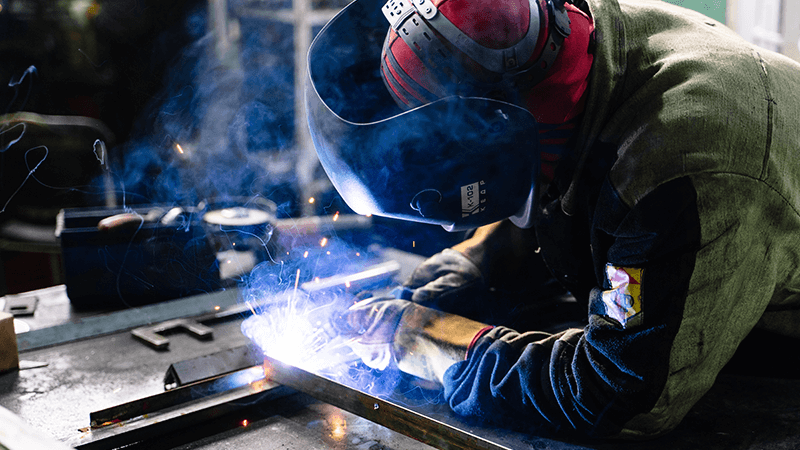
Conclusion
Laser welding is an advanced, efficient, and versatile method for producing high-quality welds. Whether you’re in automotive manufacturing, medical device production, or any other industry that requires precision welding, laser systems can provide significant benefits. By understanding the different types of lasers, the applications, and how to choose the right system, you can ensure that you’re making an informed decision for your business. Ready to explore how Kirin Laser’s systems can transform your operations? Let’s talk!
References
- "What to Look for in High-Quality Laser Welding for Sale?", from Kirin Laser.
- "Innovations in Laser Welding Technology You Need to Know", from Kirin Laser.
- "How to Find the Best Deals on Laser Welding Equipment", from Kirin Laser.
- "Understanding the Process of Laser Welding: A Beginner’s Guide", from Kirin Laser.
- "A Complete Guide to Set Laser Welding Machine for All Applications", from Kirin Laser.
- "How to Choose the Best Laser Welding Equipment for Your Needs?", from Kirin Laser.
- "Fiber laser vs CO2 laser: a comparison", from Elenlaser.
- "Laser Cutting Power: Definition, Chart, Settings and Connection with Laser Cutting Speed", from Accurl.

